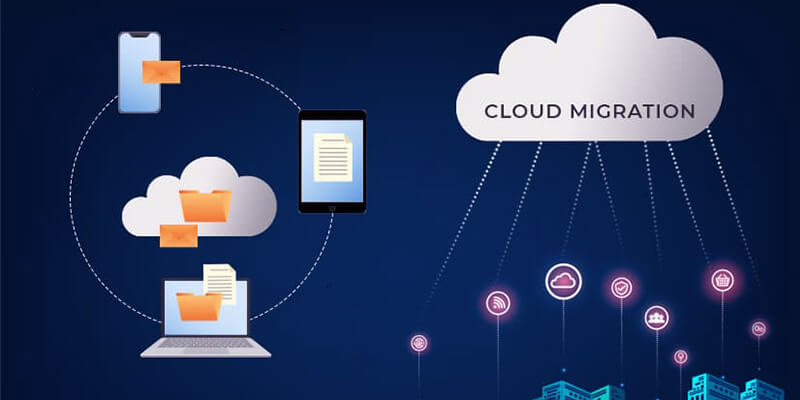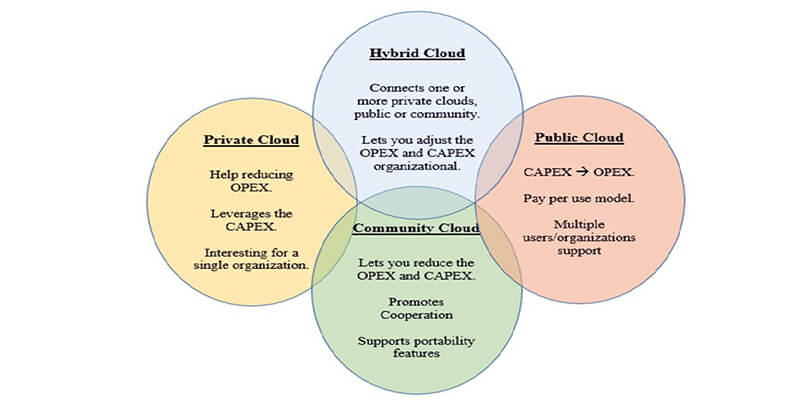How Can the Cloud Migration Process Prepare the Roadmap for Better Performances?

Cloud migration may broadly classify the challenges encountered by the bigger firms or the top-notch organizations and prepare robust strategies through which they may be handled well with much assertiveness.
Furthermore, the process through which the migration may take place involves various steps that can apprehensively offer a clear vision for hosting any of the cloud services and then, spot the methodologies that may simplify the existing business-operations – with lesser hustles.
Additionally, the hosting offered by them can comprehensively allow the customers to consume the unlimited spaces of the bandwidth that may upgrade the ways through which the incoming traffic may be scaled well and the issues related to the same may be eliminated by the cloud-optimizations at those instances.
Even the domains allocated to the customers may not perceive the restrictions that may prohibit the customers from selecting the templates that can deliver professionalism in real-times.
Instead, the access can now be allotted to the known authorities so that the finalized controls may be used by the individuals onto the processes at longer durations.
Henceforth, the ones known as the QuickBooks Hosting Providers may now understand the steps involved in the cloud-migration process and prepare the sequences through which they may effortlessly offer the hosting services to their customers – by eliminating the low-level securities thereby encompassing reliability and the best data-management presentation.
The process – cloud migration – that may prepare the customized solutions
Whether it is about validating the complexities in the existing computational environments or proposing the strategies that can promise the performances at the enhanced levels, the cloud-migration process must be known and the merits associated with the same needs to be told to the existing experts somewhere believing that the traditional norms have been performing better at the crucial times.
Moreover, those who have been talking about the Cloud QuickBooks hosting should nod their heads at the points unfolding the merits the cloud-migration process withhold within it.
This is essential because they haven’t been able to manage their expenses and track the challenges with the statistics involving complex graphs – if the cloud-based application i.e. QuickBooks would have refused to synchronize the transactional feeds -either for the taxes, cash-flows, and other payroll traits.
# Step Number One – Planning the migration of the available dependencies
Before an organization starts the migration on the available cloud-servers, it is essential for them that they are prepared well for the expected or the unexpected results.
The reason for the same is that this will help them prepare the further lists that may be used well at times the basic steps of planning the migration are reviewed so that if in case there are some involved-discrepancies, they may surely be marked and rectified – at that instance.
It is always better to process the migration under an expert’s guidance. Migration to the cloud is a complex procedure and transferrable assets need to be transferred properly without any risk of any security breach and hiring an expert guarantees for this thing. We’d recommend Dataknox, a data center decommissioning company that not only help you with the cloud migration but also will take care of your old data centers, hardware etc. in a great way.
Firstly, the individuals participating in the process must have clear-heads as this will help them give the relevant reasons to their minds as to what the benefits would be if the applications will be synchronizing with the cloud-servers.
Furthermore, the ones well-versed with the QuickBooks Cloud and the related add-ons will nod their heads at the benefits proposed – by the cloud- in real-time.
But, here, the participants need to mark the exact benefits perceived by their organizations after the process is accomplished – though it is said that the initial stage has been hectic at the times-of-the-execution.
If in case there are issues with the attentiveness or the supervision onto the ongoing activities, a manager may be assigned for planning and then, overseeing the whole process of migrating the business-applications.
This encourages more success for the required migration(s). At times the clients or the projects are demanding for the larger migration(s), it is the foremost duty of the participants working for their organizations to prepare the technical methodologies through which the required decisions may be extracted.
Additionally, a specialist can be allotted to the assigned manager for mapping the criticalities thereby strengthening the chances of the required success.
While the manager and the specialist are moving the applications – relying upon the traditional business tactics – to the data center or the platforms encouraging the cloud-benefits, there are two possibilities with which the available applications may be migrated well:
- A shallow-cloud integration
- A deep-cloud integration.
1. Shallow-cloud integration:
Shallow-cloud or the lift-&-shift-way, the manager may plan to initiate the movement of the applications towards the cloud-platforms, and try not to encompass major changes to the cloud-servers – this accomplishes the purpose of running these applications onto the destination servers.
This is because the changes accepted by the available applications won’t be entertained in the new computational environments.
Here, the participants won’t be able to access the cloud-services with utter uniqueness. Since the applications are lifted and then, moved towards the cloud-platforms with much intactness, the way is therefore called the lift-&-shift-way.
2. Deep-cloud integration:
Deep-cloud way, the chosen applications will be modified at times the migration will offer the advantages with the key abilities of the cloud-servers.
This may simply be related to auto-scaling and dynamic way through which the workloads may be balanced well.
Even many of the developers call this a type-of-sophistication because serverless computing may now positively impact many of the application-modules.
# Step Number Two – Selecting the relevant cloud-environment for better success-rates
Before the cloud-migration may be trigged onto any of the discussed-above ways, it becomes necessary to decide the cloud-types that will adopt these ways positively.
So it becomes essential to select the single or the multi-cloud – for better outcomes. If one talks about the single-cloud, this may be accomplished in a manner that the [single] cloud-provider will cater to the existing applications or the services chosen for migration – from the organization’s end.
Additionally, the single-cloud environments may imbibe the public plus the private-clouds, and then, the manager may decide which may serve better – for the futuristic or the present needs.
Undoubtedly, the ones deliberately inclined towards Qb Hosting must also choose the cloud-types appropriately as the necessary computations may only be performed if the choice is made well.
Also, these choices enable many of the performing or the non-performing organizations in a manner that they may feasibly shift their workloads towards the available cloud-types – their growing needs won’t be restricted by the server’s limits as the virtualization may be encompassed well at the evolving times.
With the models supporting single-cloud(s), the organizations are advantageously dealing with the parameters like the Enterprise Resource Planning and the client-relationship management – with much compulsiveness.
If the organizations are inclined more towards the multi-cloud, they may access the computational advantages of the variable public-cloud services – from three or more [non-identical] providers.
Based upon the complexity in the available computational environments, the clouds can be used for re-ordering the tasks and achieving award-winning results thereby reducing the chances for the vendor-lock-in.
This assertively reflects the acknowledgment as all clouds won’t comply well with the Marketing or the Sales-linked.
The reason is that the R&D section may propose different frameworks for the development, but the same cloud-solutions won’t map such requirements – with required efficiency and precision too.
Though the multiple clouds have been facilitating the organizations with the desired peace-of-mind – since the dependencies onto the known provider have been minimized, yet the costs need to be decreased [more] and flexibility must be enhanced.
Depending upon the service-type and the related requirements, the cloud may be classified as(Infrastructure-as-a-Service); PaaS (Platform-as-a-Service), and (Software-as-a-Service)SaaS.
# Step Number Three – Enabling the migration of the applications and then, validating the same
After the migration has been planned with the utmost carefulness and attentiveness, the exact process mustn’t deviate from the path at which the smoothness plus the quickness are assured.
Since the databases and the acquired applications are varying in size and complexity too, there are various techniques through which their original paths can be copied.
If in case the complicacies are detected by the manager during the migration, the original paths may be copied via the used-internet connection.
This is not a viable approach for the workloads that are larger – in the sizes, complexities, and throughputs too. The reason is that the time required for transmitting the datasets would be like hours or the days – from the allotted provider.
If in case any minor fluctuations are detected, the process will get hampered. For dealing with the same, the datasets may be compressed – like the zip-formats, etc. Make sure it is zip file not a Zip Bomb.
Rather, the physical drives can be shipped so that the cloud-provider might accomplish the transfers at reduced bandwidths.
While such activities are occurring, the manager – somewhere inclined towards Qb Cloud – should adhere to the security compliances diligently.
With this, the temporary storages are secured thereby assisting datasets to reach their destinations at lesser hustles.
After the activities are finished, the participants may take the credentials from the manager or the service-provider for reviewing the migrated applications.
Also, it is essential to take a look at the optimized resources because they will be allocated dynamically .from the servers’ end.
Therefore, the teams may now use the reviewed applications having the appropriate distribution of the resources relying on the cloud-types
Should the process need further shreds of evidence for demonstrating its worth?
Though cloud-migration promises enhanced performances, yet some demerits are assertively associated with the listed-above process.
One can call such disadvantages as the [cons] for migrating the applications onto the available cloud-types.
These may be like difficulties in extracting the crucial datasets as they are bound with the compliance standards, the applications protected via the registered trademarks may not be deployed onto the cloud-servers, varying architectures onto which these applications are made fail to offer compatibilities with the cloud(s), and so on.
But such cons should come amidst the advantages of the cloud migration process.
These are upgrading the available scalability rates as the clouds are now solving many of the organizational issues due to the non-availability of the required resources, expanding the geographical territories because the business owners may now capture the on-going activities from the remote servers – accessing the cloud, etcetera.
Rather, the process of cloud-migration must be accepted as the shreds of evidence it has delivered to making the QuickBooks Remote Desktop Services better or any other can single-handedly demonstrate the fact that the cloud-based processes may streamline the business aspects well thereby welcoming profits and also the quality audiences with many promising ways.












